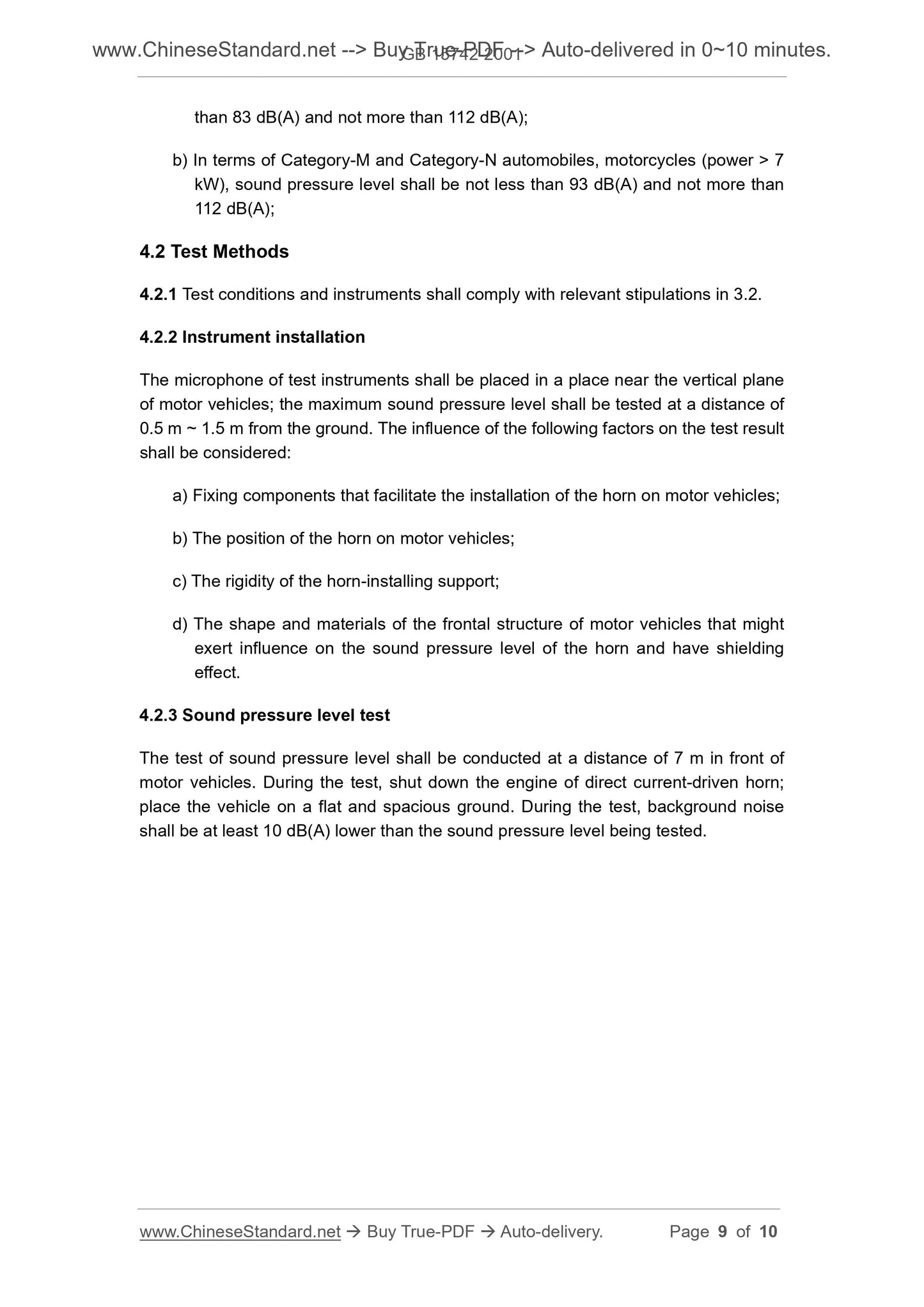1
/
of
6
PayPal, credit cards. Download editable-PDF & invoice in 1 second!
GB 15742-2001 English PDF
GB 15742-2001 English PDF
Regular price
$70.00
Regular price
Sale price
$70.00
Unit price
/
per
Shipping calculated at checkout.
Couldn't load pickup availability
GB 15742-2001: Automotive -- Electric horn -- Performance requirements and test methods
Delivery: 9 seconds. Download (and Email) true-PDF + Invoice.Get Quotation: Click GB 15742-2001 (Self-service in 1-minute)
Newer / historical versions: GB 15742-2001
Preview True-PDF
Scope
This Standard specifies performance requirements and test methods of horn for directcurrent-driven and compressed air-driven motor vehicles; performance requirements
and test methods of horn installed on motor vehicles.
This Standard is applicable to Category-M, Category-N, Category-L3, Category-L4 and
Category-L5 motor vehicles.
Basic Data
| Standard ID | GB 15742-2001 (GB15742-2001) |
| Description (Translated English) | Automotive. Electric horn. Performance requirements and test methods |
| Sector / Industry | National Standard |
| Classification of Chinese Standard | T36 |
| Classification of International Standard | 43.040.10 |
| Word Count Estimation | 7,736 |
| Date of Issue | 2001-01-10 |
| Date of Implementation | 2001-10-01 |
| Older Standard (superseded by this standard) | GB 15742-1995 |
| Quoted Standard | IEC 651-1979; IEC 225-1966 |
| Adopted Standard | ECE R28-1993, MOD |
| Issuing agency(ies) | General Administration of Quality Supervision, Inspection and Quarantine of the People Republic of China |
| Summary | This Chinese standard applies to DC and compressed air horn for motor vehicles driven by performance requirements, test methods and mounted on a motor vehicle horn on performance requirements, test methods. This standard applies to M, N, L3, L4, L5 class vehicle. |
Share











